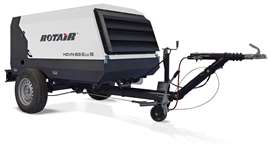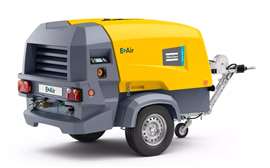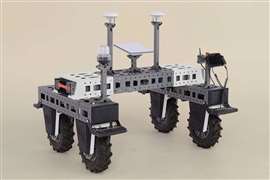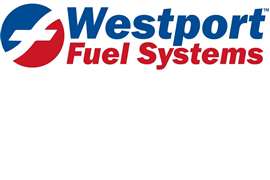Read this article in Français Deutsch Italiano Português Español
Despite push for alternatives, diesel still dominates mobile compressors
14 May 2025
Diesel power remains dominant in a variety of off-highway equipment applications, including mobile air compressors. Like the diesel engine itself, mobile compressors have provided consistent, reliable pneumatic power on construction sites around the world for more than a century.
While there’s no question of the value they provide, the emissions from the diesel engines driving them continue to be a concern in the global drive to net zero. Alternatives do exist, such as hydraulic power and power take-off (PTO). However, these require the compressor to be mounted on a carrier of some kind, which makes them more niche solutions. For mobile applications, however, the diesel-powered compressor remains a mainstay that has proven hard to replace.
No Replacement Incentives
 The MDVN52 Eco5 air compressor is powered by a Hatz diesel engine. (Photo: Rotair)
The MDVN52 Eco5 air compressor is powered by a Hatz diesel engine. (Photo: Rotair)
The latest off-highway diesel engines operating on both sides of the Atlantic comply with EU Stage V emissions regulations and U.S. Tier 4 Final standards — the most stringent on the books. However, that doesn’t mean there isn’t a need to continue addressing emissions reductions for the equipment that uses them.
Regarding mobile compressors, one challenge is that, while OEMs selling the machines can only bring models to market that comply with current emissions regulations, there are no incentives to phase out those older models with their less-than-compliant engines. This means that older diesel-powered compressors with “dirtier” emissions can continue to operate indefinitely.
For high-quality machines that are regularly maintained, that means an effective life span of as much as 15 years. Regarding large air compressors, some OEMs offer factory-certified remanufacturing programs that extend the product life cycle by returning them to like-new conditions. This includes an engine of the same tier classification as the unit was originally equipped. While contributing to a more circular economy, it does not reduce pollutants.
Thus, government incentives aimed at phasing out compressors with noncompliant engines would go a long way to reducing the carbon footprint for the industry.
Alternative Power Choices
OEMs continue their search for alternative power solutions appropriate for mobile compressors. While hydrogen combustion shows some promise, as it does for many off-highway machines, electrification seems to be the industry’s focus at present.
 The Atlas Copco E-Air H450 VSD electric mobile air compressor. (Photo: Atlas Copco)
The Atlas Copco E-Air H450 VSD electric mobile air compressor. (Photo: Atlas Copco)
A hurdle in electrifying mobile compressors is integrating batteries into the equipment’s existing footprint. Technically speaking, it can be done, and some compressors are being made battery-electric (BE). However, this approach dramatically increases the weight and cost of the compressors.
Additionally, there is “range anxiety” associated with BE compressors in terms of duty cycles and the ability to recharge quickly for extended operation. This is particularly true of screw-type compressors, which are used in more demanding applications and have duty cycles as high as 100 percent compared to piston-type units. As such, the viability of BE power is questionable for mobile compressors.
Using (Off) Grid Power
Nonetheless, batteries are not the only solution to electrification. Electric air compressors could be driven by grid power or power banks. This is currently happening in some instances. However, this approach does present certain operational challenges.
 Alex Persyn is an expert in product management for portable air compressors. (Photo: Alex Persyn)
Alex Persyn is an expert in product management for portable air compressors. (Photo: Alex Persyn)
Having to connect the unit to a source of electric power negatively affects mobility, which coupled with autonomous operation is key to using a mobile air compressor on a construction site. The additional cables on a construction site are also somewhat impractical and could present unnecessary trip hazards.
Perhaps the biggest concern, though, is how much current flow is available to drive the air compressor. To operate at rated power, an air compressor typically requires at least 63A service. However, such service is often not available. It’s more common to see 32A service, but that can have a negative impact. Variable speed drive (VSD) technology can compensate for the lower amperage, but the output and performance of the air compressor might not meet its rated values. Performance will suffer even more with 16A service.
Given the ongoing drive to net zero around the world, mobile air compressor OEMs will continue to explore alternative power sources to diesel, including electrification. However, the challenges in adopting such alternatives will mean that diesel engines will continue to play a key role in powering these machines.
POWER SOURCING GUIDE
The trusted reference and buyer’s guide for 83 years
The original “desktop search engine,” guiding nearly 10,000 users in more than 90 countries it is the primary reference for specifications and details on all the components that go into engine systems.
Visit Now
STAY CONNECTED




Receive the information you need when you need it through our world-leading magazines, newsletters and daily briefings.
CONNECT WITH THE TEAM












